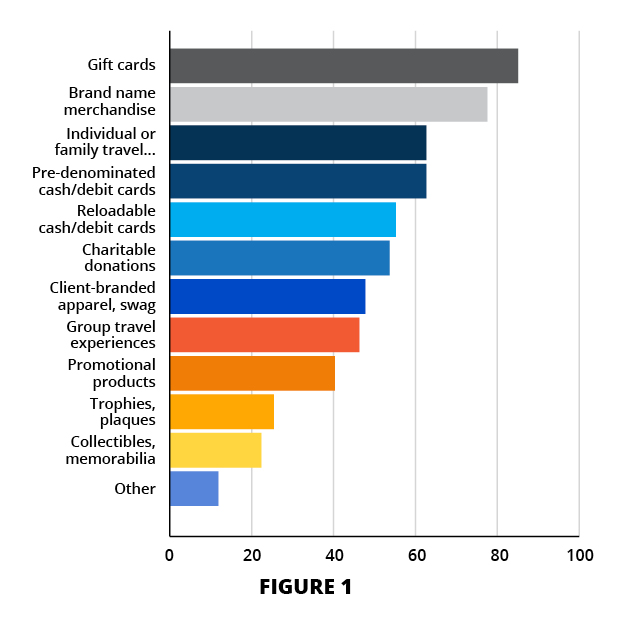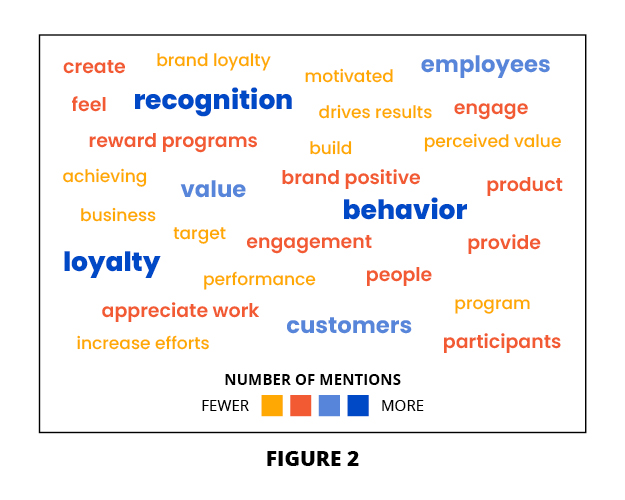
REWARD TYPES
Reward solution providers and their clients utilize different types of rewards to engage their participant groups. They pick and choose the most appropriate rewards for the audience, seeking to maximize the program’s impact by offering rewards that have the greatest appeal. The best rewards for performance-based programs are those that will inspire or motivate the highest degree of action in favor of the brand. In other words, when asking a group of people to
increase their sales or purchases of a brand (or increase their engagement as an employee), program owners must decide what kinds of rewards will make that
extra effort “worth it” to their target audience.
Some reward providers in the industry focus on fewer reward types and specialize in the fulfillment of great experiences within that category. Others procure rewards from all these sources and offer a wide array of choices.
When we asked what type of rewards their company offers survey participants stated that gift cards, merchandise, individual travel experiences, and debit cards (either pre-denominated or reloadable) are the most common offerings. Other reward offerings, including group travel, promotional products (and swag), trophies, and charitable items are typically provided by specialist companies that can plug into programs in a turnkey manner.
WHY DO REWARD PROGRAMS WORK?
We asked respondents to describe in their own words why they believe incentive, recognition, and loyalty programs work for business. It is clear in the resulting word cloud below that reward programs create (some say “drive”) activity. The words below have strong ties to either 1) action: build, achieve, drive, behave, engage, create, etc.; or 2) emotion: loyalty, recognition, perception, feel, motivation, etc.

We know from behavioral science and psychology that extrinsic motivation can help organizations deliver incremental performance. This is not to say that intrinsic motivation isn’t important as well, just that in isolation reward-oriented programs are effective at delivering results for focused goals. In the context of a
well-designed incentive program, industry research shows that the reward itself is cited as a primary factor in the brand experience that leads to the extra effort needed to achieve greater results.
“If rewards are so important, shouldn’t we just give out cash rewards?” Dozens of significant studies cover this topic, and it is impossible to do them justice in this recap, however, the best answer to this question is with the question, “What are you trying to achieve?” In some scenarios, cash may be a viable option, but the downside for brands is that cash does not have a lasting impact on brand perception. On the other hand, “non-cash” rewards deliver a more memorable experience – one that earns brands lasting impressions. People tend to remember the brand that led them to own a new smartwatch, or to vacation in Hawaii.
This question of why reward programs work is essential to the value of this industry, which is why we are spending more time on it here than other questions from the survey. We are also including the most salient verbatim responses in the appendix. Further research on the impact and importance of rewards can be found at the
Incentive Research Foundation website.